The authority on inflatable boats, Mako, strives to provide the top of the line rigid and semi-rigid inflatables. Whether it is a dingy for your yacht, or a full out racing inflatable, we cover them all.
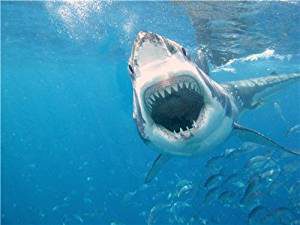
Check out our boats
The authority on inflatable boats, Mako, strives to provide the top of the line rigid and semi-rigid inflatables. Whether it is a dingy for your yacht, or a full out racing inflatable, we cover them all.

Check out our boats
When it comes to boating, everyone has a preference. Each person has things that they will feel is the most important thing for a boat to have. Perhaps that is why there are many people who like the larger boats. These larger monohull boats often they have several amenities that make it more luxurious when venturing out into open water and there are some things you simply cannot get on a smaller boat. For instance, a cabin with a bathroom. At least; that is what many people think and others are willing to carry out a camping toilet to have that simple luxury. However, it still lacks a little of the comfort of home. Have you ever considered the onboard bathroom luxuries in an inflatable vs a monohull?
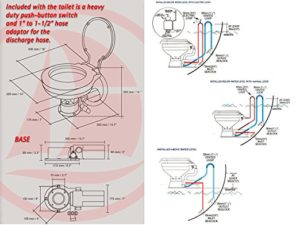 Monohulls have a single hull whereas catamarans have two hulls of equal size. Both types will most of the time have a cabin with most all of the luxuries of home. They may have shower stalls and sleeping areas, and more. They are designed with your comfort in mind and many of them can be used for multiple days at a time without you ever feeling as though you have to do without. Many of them have such things as the best dual flush toilet that you can get. They are the same size as toilets that you may have at home and they are very easy to keep clean. This is ideal for smaller cabin spaces since you will not have to worry about odors from the throne.
Monohulls have a single hull whereas catamarans have two hulls of equal size. Both types will most of the time have a cabin with most all of the luxuries of home. They may have shower stalls and sleeping areas, and more. They are designed with your comfort in mind and many of them can be used for multiple days at a time without you ever feeling as though you have to do without. Many of them have such things as the best dual flush toilet that you can get. They are the same size as toilets that you may have at home and they are very easy to keep clean. This is ideal for smaller cabin spaces since you will not have to worry about odors from the throne.
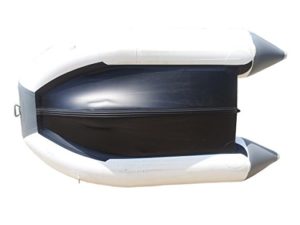 These boats are ideal for some people and in most situations. They can be very large and have covered spaces onboard. Some may have a cabin of sorts to keep the sun off you. They have motors to ensure that you can get to your favorite fishing spot. Most all can have batteries on board for not only the motor, but to power your GPS, radios, and other important things. The one thing they do not have is bathrooms. It is not possible to put an actual flushing toilet onboard a boat that must stay free of holes. Admittedly, if you have a covered inflatable, you may be able to put a bucket type toilet in the cabin to give you a place to go, but then you have to figure out what to do with it when you are finished.
These boats are ideal for some people and in most situations. They can be very large and have covered spaces onboard. Some may have a cabin of sorts to keep the sun off you. They have motors to ensure that you can get to your favorite fishing spot. Most all can have batteries on board for not only the motor, but to power your GPS, radios, and other important things. The one thing they do not have is bathrooms. It is not possible to put an actual flushing toilet onboard a boat that must stay free of holes. Admittedly, if you have a covered inflatable, you may be able to put a bucket type toilet in the cabin to give you a place to go, but then you have to figure out what to do with it when you are finished.
For some people, a bathroom can make or break their enjoyment of the great outdoors and on their boat. It is something that everyone needs access to sometimes. Without them, Mother Nature’s call can be quite annoying to deal with. It is more important than a shower, it is more important than having a bed to sleep on, and it much more important than all other luxuries you may find on an inflatable; including the motor, GPS, and fish finders.
What do you feel makes a boat most usable? Do you enjoy spending a day on the water and knowing that you have a place to “go” or that something that is a luxury you do not feel is required?
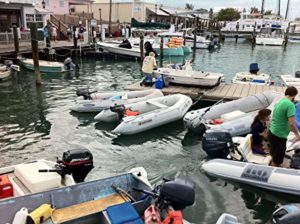 Many people are choosing the cheaper alternative to traditional boats. It is the growing trend to choose inflatable over pricier options and it is not something that will fade anytime soon. People love the easy portability and cost effectiveness that comes with inflatables, and thanks to rigid inflatables, they can also have the power of a motor rather than just their paddling power. However, for this, you need to understand what it takes to get the maximum amount of power and speed from your rigid inflatable. Do you know what powering your rigid inflatable takes?
Many people are choosing the cheaper alternative to traditional boats. It is the growing trend to choose inflatable over pricier options and it is not something that will fade anytime soon. People love the easy portability and cost effectiveness that comes with inflatables, and thanks to rigid inflatables, they can also have the power of a motor rather than just their paddling power. However, for this, you need to understand what it takes to get the maximum amount of power and speed from your rigid inflatable. Do you know what powering your rigid inflatable takes?
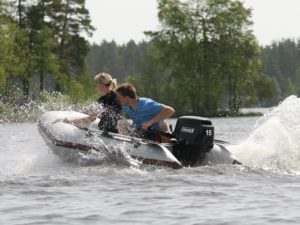 Rigid inflatables can handle motors that are designed for other boats. As far as horsepower most ribbed inflatables can handle motors that are anywhere from 5hp to 300hp depending on the size, people on board, and the water that you will be riding in. Most of the inflatable boat motors may travel up to 30 knots, but there are people who choose to put more power on them so that they may reach up to 70 knots. The faster speeds and larger HP motors are used mostly for racing boats since inflatable ribbed boats are very lightweight, stable in rough water, and fast. The thing to remember when choosing a motor for your rigid or ribbed boat is that they are designed to hydroplane. Their hulls enable it to go fast on top of the water and they can most of the time out-perform traditional boats of a similar size. This means even if you keep the HP low, you will still have plenty of speed pushing you across the water. However, choosing the perfect motor size is only have the battle. To truly have a great rigid inflatable boat, you have to consider other aspects as well.
Rigid inflatables can handle motors that are designed for other boats. As far as horsepower most ribbed inflatables can handle motors that are anywhere from 5hp to 300hp depending on the size, people on board, and the water that you will be riding in. Most of the inflatable boat motors may travel up to 30 knots, but there are people who choose to put more power on them so that they may reach up to 70 knots. The faster speeds and larger HP motors are used mostly for racing boats since inflatable ribbed boats are very lightweight, stable in rough water, and fast. The thing to remember when choosing a motor for your rigid or ribbed boat is that they are designed to hydroplane. Their hulls enable it to go fast on top of the water and they can most of the time out-perform traditional boats of a similar size. This means even if you keep the HP low, you will still have plenty of speed pushing you across the water. However, choosing the perfect motor size is only have the battle. To truly have a great rigid inflatable boat, you have to consider other aspects as well.
The truth is, even the biggest, baddest, motor available for a boat will fail to live up to its full potential if you forget about choosing the best marine battery available to power it. Everything on a boat starts with the battery. It is the heart of all operations and when it fails, your boat will as well. It has been proven time and time again by racing boats who fall short because of a battery issue that was unforeseen. This means that unless you have a desire to end up stuck in the water; you may also want to keep the lesson of those boat racers in mind. They all recommend you do your research and find the best deep cycle battery you can. For that, most all will tell you that the reviews are what matters.
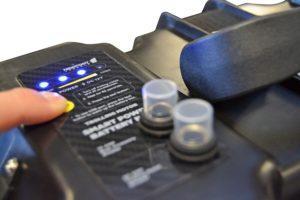 Marine battery reviews are important because they are submitted by real battery owners that have already formed an opinion on the battery life and its overall quality. It could be the key to ensuring that you spend your money wisely on a battery that is fit for a racing boat, and you can bet that any marine battery that will work for racing; will work for a fun day out on the water for you with family and friends.
Marine battery reviews are important because they are submitted by real battery owners that have already formed an opinion on the battery life and its overall quality. It could be the key to ensuring that you spend your money wisely on a battery that is fit for a racing boat, and you can bet that any marine battery that will work for racing; will work for a fun day out on the water for you with family and friends.
No matter how much our world changes and we embrace technology, there will always be a place in our lives for natural bodies of water. There are just so many people out there that enjoy riding on their boat and fishing. However, technology has allowed us to change the way that our boats look. There are now people who are choosing inflatables over traditional boats. Are you ready to climb on board an inflatable? Many say it is a great switch for you to consider and we have discovered the many reasons people choose inflatables. We also encourage you to check out the comparisons we make when discovering which is best in the battle of rib inflatable vs boat.
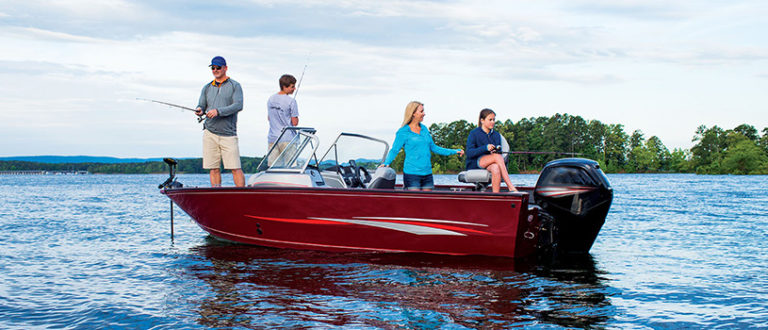 The biggest reason for people choosing hardshell over inflatable is the fact that they feel safer within a hard-shell boat. They like knowing that the chance of it developing a puncture is very slim. However, traditional boats are not unstoppable. There are situations where you can puncture them. Most people also like the different hull shapes and size options. They like their fish finders and powerful motors. They appreciate the stability that they have when standing up fishing on their boat and most owners of a hard-shell boat cannot imagine using something that is inflatable.
The biggest reason for people choosing hardshell over inflatable is the fact that they feel safer within a hard-shell boat. They like knowing that the chance of it developing a puncture is very slim. However, traditional boats are not unstoppable. There are situations where you can puncture them. Most people also like the different hull shapes and size options. They like their fish finders and powerful motors. They appreciate the stability that they have when standing up fishing on their boat and most owners of a hard-shell boat cannot imagine using something that is inflatable.
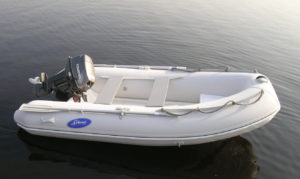 Admittedly, there are people who say that an inflatable can develop air leaks and that they are unstable. However, most inflatable manufacturers try to lessen potential concerns. The ribbed boats are very stable when in the water and most all have multiple air chambers to ensure that you are safe in the event that you do happen to run over something. They are also made of very durable PVC or Tarpaulin, which means that they are very difficult to puncture. Most all inflatables can be used with a trolling motor and other devices to make your day out on the water fun.
Admittedly, there are people who say that an inflatable can develop air leaks and that they are unstable. However, most inflatable manufacturers try to lessen potential concerns. The ribbed boats are very stable when in the water and most all have multiple air chambers to ensure that you are safe in the event that you do happen to run over something. They are also made of very durable PVC or Tarpaulin, which means that they are very difficult to puncture. Most all inflatables can be used with a trolling motor and other devices to make your day out on the water fun.
In the battle between inflatable kayak vs hardshell, you have to look at how they are similar. The same is true for all other inflatable vs hard shell varieties. Both types are able to provide the rider with stability and durability if you take care of them and watch where you are going while in the water. Inflatables have been used for whitewater and so have hard shell boats. Where the inflatable comes out ahead, though, is in price and portability. The price of hard shelled boats, regardless of type, will always be more expensive than you could purchase an inflatable for. Hard shelled boats will also require you to have a trailer or a rack to carry it on. Inflatables can fold up and store within the trunk of a car. They are lightweight so that you can pick them up and carry them with you. They also work well on hard boats as a spare boat in the event of unforeseen issues. For many people, these facts mean that the rib inflatable is more desirable to own. For others, they have the boat and trailer set up and feel that they do not need to change anything. From there, you have to decide for yourself which is ideal for your situation.
Not all kayaks are created equal. Therefore, why do most people assume that the paddle they choose to go kayaking with will be? The truth is; there are several different kayak paddle styles available and choosing the right one could easily make your outdoor adventures much more enjoyable. As proof of this fact, we are here to discuss how to choose a kayak paddle and how choosing the right one can help you enjoy your adventure more.
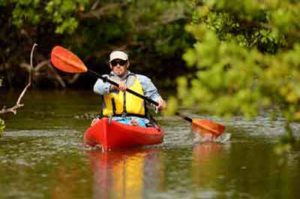
Carefully Consider Your Kayak Paddle Length
Size definitely matters when it comes to kayaking. To figure out the length of your ideal kayak paddle, you need to keep in mind two different things at one time; your size and how wide your kayak is. This is because most kayaks are between 23” or less and 32” up. There is a wide range of widths. If you choose a paddle that is designed for a very wide kayak, but your kayak is only 20” wide, you could end up with a lot more weight on the paddle ends than you need. The same is true if you are less than 5’ tall, but you are using a paddle that was designed to be used by someone 6’ or more. Beyond that, the length will also depend on your style of paddling. If you enjoy a relaxed style of paddling your kayak, you will want a low-angle paddle, which is going to be slightly longer than the more aggressive, faster, high-angle paddle. The kayak paddle will have a shaft that determines how long it is and there are different shafts for you to choose from. A person with small hands, will not have an enjoyable day on the water if their paddle is too thick and a person with larger hands probably will not enjoy a thinner shaft. You may also want a curved shaft if you want to increase your comfort while paddling.
Choose Your Kayak Blade
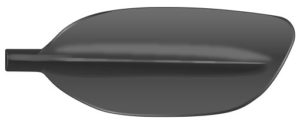 Typically, there are only a few types of blade material used on a kayak paddle. There are fiberglass blades, which are ideal for touring since they are somewhat lightweight and durable, carbon fiber, which is very lightweight and ideal for multi-day trips, and all other materials including; nylon, plastic, and aluminum. The plastic, nylon, and aluminum paddles may all have pros and cons, but they are the most affordable and you do not have to put as much effort into caring for them. Many people recommend that you have a good paddle, either the carbon fiber or fiberglass, but carry one of the other types as a spare in case you need it.
Typically, there are only a few types of blade material used on a kayak paddle. There are fiberglass blades, which are ideal for touring since they are somewhat lightweight and durable, carbon fiber, which is very lightweight and ideal for multi-day trips, and all other materials including; nylon, plastic, and aluminum. The plastic, nylon, and aluminum paddles may all have pros and cons, but they are the most affordable and you do not have to put as much effort into caring for them. Many people recommend that you have a good paddle, either the carbon fiber or fiberglass, but carry one of the other types as a spare in case you need it.
Blades are also available as feathered and nonfeathered. Nonfeathered blades are positioned in a way that they are in line with one another, which means that both blade ends are tilted in the same way, typically straight up and down. Feathered blades are slightly offset to resist wind resistance and to protect your wrist from getting as tired when paddling. The smaller the angle, the easier it will be on your wrists. When traveling over large areas of water, avoiding wrist fatigue will be beneficial.
A lot of people have begun taking a closer look at inflatable boats and kayaks. Why not? They are more affordable and nearly as dependable as a traditional, hard shell boat or kayak. Technology is constantly improving to ensure that these inflatables are stronger than ever before. That is why we feel it is important that you gain a better understanding of which boat or kayak style you want. We will tell you the difference between a rib inflatable boat vs inflatable kayak and in doing so, will help you make the right choice for your next adventure out on the open water.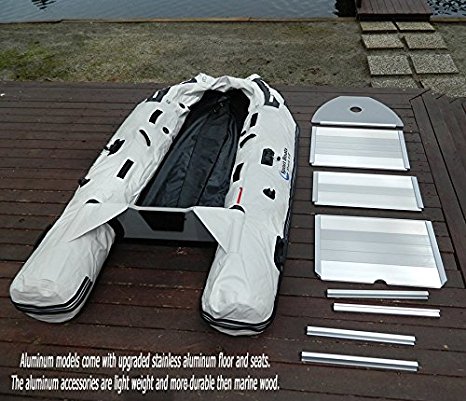
This type of boat is also commonly referred to as a rigid inflatable. It is a boat that is made of rubber and air, the same as all other inflatables, but it also has stronger framework. They are very durable and in some cases, faster than you may expect. They are sea worthy and can handle even rough waves without you having to fear that they will tip over. If you have a desire to go white watering, the rigid boat may be more able to stay afloat without tipping over and they are certainly more able to handle it than hard shell boats or kayaks. They also do not need to be deflated every time you take them out of the water if you have a way to carry them when inflated.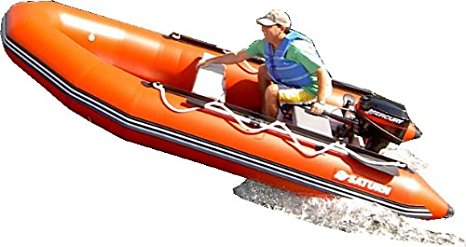
The downside is that the rib inflatable boats are going to be heavier than other inflatables. They will also be more difficult to carry and wont fold down as compactly as inflatables normally would. You should also expect to pay more for a basic rib inflatable boat. It will be as costly as a top of the line standard inflatable kayak.
Most inflatable kayaks are designed for portability. They fold up small enough to fit into a backpack and can be kept inside of a trunk without taking up too much of your car’s trunk space. They are very lightweight and many weigh around 20 pounds. They inflate and deflate quickly so that you can be on the move in a very short timeframe. Many of them are also priced at around $100, but if you want a higher quality one, you can expect to spend $4-500 on it.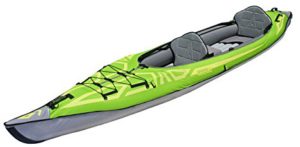
The price you pay for having a cheaper kayak is that punctures are more likely to happen when you are in a lightweight inflatable kayak. You lessen the risk by spending a little more for a thicker fabric. Since inflatable kayaks are so lightweight, you also should consider the way it handles. They are not as easy to use as an inflatable boat. They are more likely to tip over and high winds can make them very unstable. The bonus is that because they are so lightweight, you can expect them to go faster.
See An Intense Inflatable Kayak Race
The truth is, everyone who wants an inflatable will have a personal preference. Inflatable boats are larger than inflatable kayaks, but nowadays, kayaks can carry three people. Rigid inflatable boats are more easy to handle, but inflatable kayaks are faster. Beyond all of that, you must choose your boat based on the quality that you can afford and this is perhaps what makes it the hardest choice to make.
When it comes to inflatable kayaks and canoes, many people still question whether they are durable and dependable. We are here to tell you that if you choose carefully, you can get an inflatable kayak that will last longer than you may ever expect. The important part of choosing isn’t based on the name or the price that you will pay for it. It has to do mostly with the way the inflatable boat construction was handled.
When constructing an inflatable boat, there is a lot of effort put into ensuring that it is perfect. Although the plastic or vinyl may look flimsy, it isn’t. It has gone through an extensive melting process to ensure that it is made in a uniformed thickness. There are not going to be any thick areas or thin areas within the polyethylene plastic. The same is true for boats that are made using Hypalon, PVC, or Neoprene.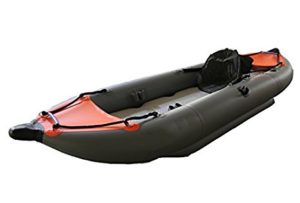
Once the materials that are being used have been heated and reached a consistent thickness, the cooling process will begin. We put a lot of effort into the cooling aspect of these boats because there is a high risk of them becoming warped. If it warps, it may not fit together properly when joined.
Some boats are made using several sheets of formed material, because it is easier to work with. The catch to that is that many inflatables fail where they are joined together in seams. That is why we do a double layer seam that is welded and taped together on both sides. This ensures it will remain air tight and never leak out when you are using it on the water.
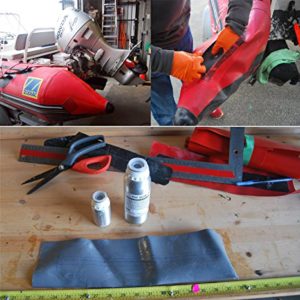 Many inflatable boats and canoes are made using Hypalon. It is a material that is commonly used for handling high temperature products, waste water, and other things that may weaken other types of material. It is able to handle contaminated stuff that needs to be contained and it doesn’t weaken after constant exposure to UV rays. That is why we use it on the exterior of our boats.
Many inflatable boats and canoes are made using Hypalon. It is a material that is commonly used for handling high temperature products, waste water, and other things that may weaken other types of material. It is able to handle contaminated stuff that needs to be contained and it doesn’t weaken after constant exposure to UV rays. That is why we use it on the exterior of our boats.
From there, you also have Neoprene on the inside of the boats shell. It is a synthetic rubber that is best suited for inside the boat since it has already proven itself to be able to block air from seeping out and resists oil. It is also a material that has been used for a variety of things throughout history.
PVC is a plastic polymer. It is easy to patch if you end up somehow damaging it, but many owners say that it does not always hold air as well as it should. This is even truer if they leave it out in the sun for an extended period of time. These boats are often cheaper to own, but if you are a diehard fan of inflatable boating or kayaking and you hope to leave it aired up while you pull it behind your sailboat, it may not be what you were hoping for.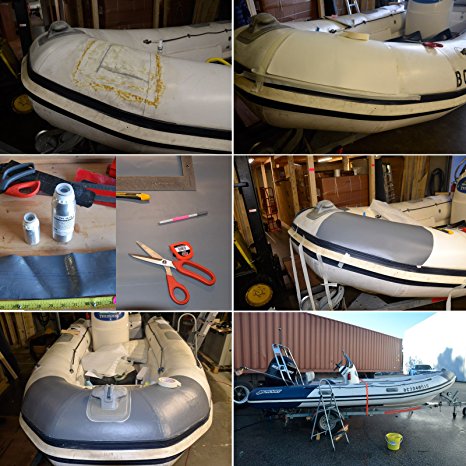
When it comes to inflatable kayaks and canoes, many people still question whether they are durable and dependable. We are here to tell you that if you choose carefully, you can get an inflatable kayak that will last longer than you may ever expect. The important part of choosing isn’t based on the name or the price that you will pay for it. It has to do mostly with the way the inflatable boat construction was handled.
When constructing an inflatable boat, there is a lot of effort put into ensuring that it is perfect. Although the plastic or vinyl may look flimsy, it isn’t. It has gone through an extensive melting process to ensure that it is made in a uniformed thickness. There are not going to be any thick areas or thin areas within the polyethylene plastic. The same is true for boats that are made using Hypalon, PVC, or Neoprene.
Once the materials that are being used have been heated and reached a consistent thickness, the cooling process will begin. We put a lot of effort into the cooling aspect of these boats because there is a high risk of them becoming warped. If it warps, it may not fit together properly when joined.
Some boats are made using several sheets of formed material, because it is easier to work with. The catch to that is that many inflatables fail where they are joined together in seams. That is why we do a double layer seam that is welded and taped together on both sides. This ensures it will remain air tight and never leak out when you are using it on the water.
Many inflatable boats and canoes are made using Hypalon. It is a material that is commonly used for handling high temperature products, waste water, and other things that may weaken other types of material. It is able to handle contaminated stuff that needs to be contained and it doesn’t weaken after constant exposure to UV rays. That is why we use it on the exterior of our boats.
From there, you also have Neoprene on the inside of the boats shell. It is a synthetic rubber that is best suited for inside the boat since it has already proven itself to be able to block air from seeping out and resists oil. It is also a material that has been used for a variety of things throughout history.
PVC is a plastic polymer. It is easy to patch if you end up somehow damaging it, but many owners say that it does not always hold air as well as it should. This is even truer if they leave it out in the sun for an extended period of time. These boats are often cheaper to own, but if you are a diehard fan of inflatable boating or kayaking and you hope to leave it aired up while you pull it behind your sailboat, it may not be what you were hoping for.